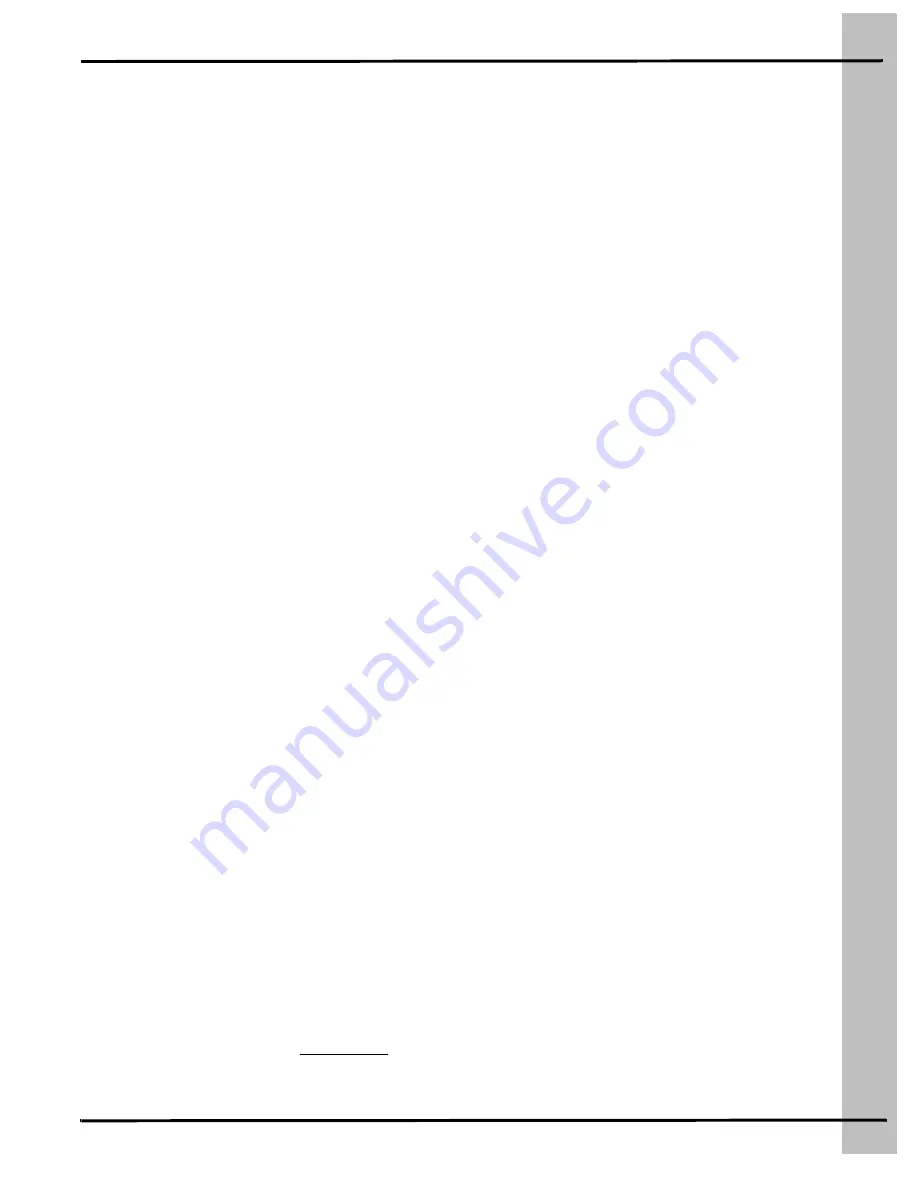
14. Pipe Sizing Guidelines
PNEG-308
Purafire
49
By knowing the BTU requirements of an installation, the proper pipe size can be determined. The
amount of gas that can flow in a given pipe size is determined by its pressure. If a large pipe and a small
pipe both have the same pressure, the large pipe will deliver a greater amount of gas. Also, increasing
the pressure in a pipe will increase the volume of gas that it can carry. However, it is important not to
exceed pressure ratings that are listed on regulators, fittings, and gas valves. Because the pipe that
supplies the appliance is fixed in size, pressure is used to determine the volume of gas that is available.
If the pressure at the orifice is too high, the gas valve could pressure-lock or the High-Limit switch could
trip due to excess temperature. If the pressure at the orifice is too low, the heater will not run efficiently
and may experience problems lighting or staying lit. Low gas pressure can also increase the regulator’s
lock-up pressure which can pressure-lock the gas valve. The most frequent cause of low gas pressure
is undersized piping. This can occur on both the low and high pressure sides of the regulator.
It is usually more cost efficient to use high pressure (above 1 PSI) on longer lengths of pipe. The higher
pressures will allow the use of smaller (less expensive) pipe sizes. In fact, the savings in the cost of the
pipe will be more than pay for the cost of additional secondary regulators. The use of multiple secondary
regulators will also provide more accurate control of the pressure setting.
To determine the proper size of a gas line, four (4) factors must be known:
1. The type of gas being used. (i.e. Propane or natural gas).
2. The pressure to be maintained in the pipe.
3. The distance from the supply to the appliance that is the farthest away.
4. The BTU requirements of each appliance. Be sure to include any additional appliances that may
be added in the future.
Factors (1) and (2) determine which chart to use for the sizing.
Factor (3) determines which line of the chart to use. If the exact distance is not listed on the chart, use
the next longest distance.
This is the only line that will be used for the pipe sizing.
Factor (4) will
determine the pipe size for each section of the supply piping.
Instruction for Sizing Pipe
1. Making a sketch of the installation as seen in the examples.
2. Note the maximum demand of each appliance. Be sure to include any appliance that may be
added in the future.
3. Label each junction with a letter as seen in the examples.
4. Find the distance from the gas meter, regulator, or tank to the appliance farthest away.
5. Calculate the total BTU demand for each section of piping.
6. Refer to the chart with the desired gas and pressure. (i.e. Propane @ 5 PSI)
7. Find the distance which is equal to
or greater
than the number determined in step #4.
This is
the only line that will be used for the pipe sizing.
8. Determine the smallest pipe which has a BTU capacity equal to
or greater
than the demand for
each section.
NOTE:
When the required pipe size is larger than the inlet or outlet side of a regulator, use a bell
reducer or bushing immediately entering or exiting the regulator.
Содержание C225
Страница 21: ...PNEG 308 Purafire 21 6 Wiring Diagrams 120V Models Figure 6A...
Страница 22: ...22 PNEG 308 Purafire 6 Wiring Diagrams 220V Models Figure 6B...
Страница 23: ...PNEG 308 Purafire 23 7 Wiring Harness Wiring Harness Assembly Figure 7A...
Страница 32: ...32 PNEG 308 Purafire 11 Parts List C225 NG LP Galv Purafire 120V 60 Hz...
Страница 34: ...34 PNEG 308 Purafire 11 Parts List C225 X1 NG LP Galv Purafire 220V 50 60 Hz...
Страница 36: ...36 PNEG 308 Purafire 11 Parts List C80M NG LP Galv Purafire 120V 60 Hz...
Страница 38: ...38 PNEG 308 Purafire 11 Parts List C80M X1 NG LP Galv Purafire 220V 50 60 Hz...
Страница 56: ...56 PNEG 308 Purafire NOTES...










































